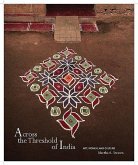"The People of India, Volume 5" is a meticulously documented series of photographic illustrations with descriptive letterpress, showcasing the diverse races and tribes of Hindustan. Originally published in 1868, this volume offers a fascinating glimpse into the ethnographic landscape of 19th-century India. Each photograph is accompanied by detailed descriptions, providing valuable insights into the customs, traditions, and physical characteristics of the various communities that comprised the Indian subcontinent. This historical record serves as an invaluable resource for anthropologists, historians, and anyone interested in the rich cultural heritage of India. This edition preserves the historical integrity of the original work, making it accessible to contemporary audiences. This work has been selected by scholars as being culturally important, and is part of the knowledge base of civilization as we know it. This work was reproduced from the original artifact, and remains as true to the original work as possible. Therefore, you will see the original copyright references, library stamps (as most of these works have been housed in our most important libraries around the world), and other notations in the work. This work is in the public domain in the United States of America, and possibly other nations. Within the United States, you may freely copy and distribute this work, as no entity (individual or corporate) has a copyright on the body of the work. As a reproduction of a historical artifact, this work may contain missing or blurred pages, poor pictures, errant marks, etc. Scholars believe, and we concur, that this work is important enough to be preserved, reproduced, and made generally available to the public. We appreciate your support of the preservation process, and thank you for being an important part of keeping this knowledge alive and relevant.
Bitte wählen Sie Ihr Anliegen aus.
Rechnungen
Retourenschein anfordern
Bestellstatus
Storno








